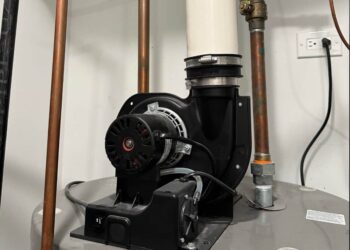Fire safety is a crucial aspect of any workplace or home environment. While fire prevention is ideal, having the right tools to combat a fire effectively is equally important. One such tool is the fire extinguisher. However, not all fire extinguishers are the same.
Understanding the different types and their uses is essential for effective fire management. In this guide, we’ll delve into the various types of fire extinguishers, their classifications, and when to use them.
Understanding Fire Classes:
Before we dive into the types of fire extinguishers, it’s vital to understand the classes of fires they are designed to combat. Fires are categorized into different classes based on the materials involved. The classifications are as follows:
Class A: Fires involving ordinary combustible materials like wood, paper, cloth, and plastics.
Class B: Fires fueled by flammable liquids such as gasoline, oil, grease, and solvents.
Class C: Fires ignited by energized electrical equipment like appliances, wiring, and circuit breakers.
Class D: Fires caused by combustible metals like magnesium, sodium, and titanium.
Class K: Fires involving cooking oils and fats typically found in commercial kitchens.
Understanding these classes is crucial because different types of extinguishers are designed to tackle specific fire classes.
Types of Fire Extinguishers:
Now, let’s explore the different types of fire extinguishers and their suitability for various fire classes:
Water-Based Extinguishers (Class A):
Water extinguishers are effective against Class A fires involving ordinary combustible materials. They work by cooling the fire and removing heat from the fuel source. However, they should not be used on fires involving electrical equipment or flammable liquids as water conducts electricity and may spread the fire.
Foam Extinguishers (Class A and B):
Foam extinguishers are versatile and suitable for Class A and B fires. They create a barrier between the fuel and oxygen, smothering the flames. Foam extinguishers are effective for extinguishing liquid fires like gasoline or oil.
Carbon Dioxide (CO2) Extinguishers (Class B and C):
CO2 extinguishers are ideal for Class B and C fires involving flammable liquids and electrical equipment. They work by displacing oxygen, effectively suffocating the fire. However, CO2 extinguishers do not provide post-fire security and may require caution due to their cold discharge.
Dry Chemical Extinguishers (Class A, B, and C):
Dry chemical extinguishers are suitable for a wide range of fire classes, including Class A, B, and C. They contain a dry chemical powder that interrupts the chemical reaction of the fire. While effective, they may leave residue and should be cleaned up after use.
Wet Chemical Extinguishers (Class K):
Wet chemical extinguishers are specifically designed for Class K fires involving cooking oils and fats. They work by creating a foam blanket that cools the fire and prevents re-ignition. Wet chemical extinguishers are commonly used in commercial kitchens.
Class D Extinguishers:
Class D extinguishers are specialized for fires involving combustible metals. They contain dry powder or foam specifically formulated to extinguish metal fires safely. These extinguishers are typically found in industrial settings where combustible metals are present.
Choosing the Right Extinguisher:
Selecting the appropriate fire extinguisher for your environment is crucial for effective fire management. Consider the following factors when choosing a fire extinguisher:
Identify the potential fire hazards in your environment and determine the likely fire classes.
Ensure that the chosen extinguisher is compatible with the anticipated fire risks.
Train personnel on the proper use of fire extinguishers and familiarize them with the location of each extinguisher.
Regularly inspect and maintain fire extinguishers to confirm they are operational and in a satisfactory condition, including checking the integrity of the fire extinguisher covers.
In Conclusion
Fire extinguishers are essential for fire safety, but their effectiveness relies on proper selection and usage. By understanding the different types of fire extinguishers and their applications, you can better prepare for emergencies and protect lives and property. Fire safety is everyone’s responsibility, so be proactive and stay informed.





